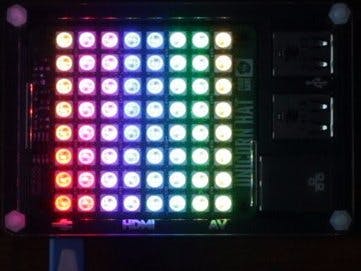Biomaker Team #38
Synopsis
Most plant biologists use standard growth cabinets that are programmed to switch fluorescent lights on and off at set times. Although these cabinets can effectively generate different day lengths, they cannot recreate natural, gradual light transitions that occur during dawn and dusk. To overcome this, we built a programmable LED array system that can create thousands of light intensity and wavelength ratio combinations. We incorporated it with an existing imaging system specifically to investigate the impact of natural lighting regimes on circadian gene expression. Although expensive hardware is required to replicate our circadian experiments, we relied on a basic LED system to generate the gradual light transitions. This basic system can be viewed as a stand-alone upgrade for existing growth cabinets that can allow researchers to explore the impact of variable light intensities and/or wavelength ratios on plant growth and development.
1) Recreating daylight transitions
Firstly, we needed to determine the LED output required to recreate dawn and dusk in our growth cabinets. We are grateful for the light spectra and intensity data kindly provided by Donald Fraser and Dr. Keara Franklin in Bristol University. These data were crucial for guiding the development of our system (snapshots of the readings are shown below).
2) Hardware Set Up for Our Prototype
For our prototype, we attached a Raspberry Pi to a Unicorn HAT using a stacking header (a pin extender block). This raised the HAT sufficiently from the board to allow the Pi casing and a modified lid to be fitted (see below).
3) Our Basic LED System
Script Development
We took the 24-hour spectrophotometer dataset and determined average, relative intensity changes, across all wavelengths for each 20 minute time point. We then translated these outputs as relative intensities and added these to the script as LED output values. Our Basic LED Script uses maximum red, green and blue values for all LEDs and only alters the intensity over time. This script can be used directly, or be easily adapted to create bespoke combinations of light intensity, time resolution and wavelength ratios.
HAT Limitations
We were impressed by the light produced by a single Unicorn HAT. When set at maximum intensity for Red, Blue and Green light, we found that the 8x8 array produced ~6 µmol/m2/s at a height of 25 cm. This is comparable to lower settings in standard growth cabinets and may be sufficient to achieve slow growth of Arabidopsis thaliana. However, we needed to fit the HAT alongside the camera ~60 cm above the plants growing in four 10cm x 10cm plates to satisfy our imaging requirements. This reduced the light intensity to just ~1 µmol/m2/s. For this, and other situations where higher light intensity is required, we found a way to drive 2 HATs from a single Pi using jumper wires. (Details of this are detailed in the "How to drive multiple HATs" section below ).
Apart from HAT light intensity, the only other limitation we encountered was the lowest value of 17.5% intensity output. Values lower than this do not activate the HAT. Despite this we were able to produce a similar lighting pattern to the one recorded in Bristol. A graph comparing a standard 12 hour light cabinet setting with the processed Bristol data and our LED simulation is shown below.
4) Trial Circadian Experiment
Circadian regulation is important for almost all living organisms as it provides an internal clock that synchronises physiological processes with optimal times of day. This synchronicity relies on the activity of core circadian genes that regulate thousands of downstream genes. Plants containing a luciferase gene tagged to circadian gene sequences can be imaged to create time-lapse videos that reveal ~24hour cycles of pulsating bioluminescence. Analysis of these images allows us to determine when clock genes are switched on, when they reach peak activity and when they are switched off again. Our goal was to devise a system that would allow us to compare core circadian gene activity under two contrasting 12 hour lighting regimes - standard square wave (where lights are either on or off) and more natural conditions that incorporate gradual dawn and dusk transitions.
This experiment required us to run two programmes simultaneously - one controlling the image acquisition and the other controlling the LEDs. Since luciferase imaging requires a 5min period of darkness (to allow residual light to dissipate) before the camera collects low level bioluminescence during a ~15 min exposure. This meant that we needed to amend the Basic LED Script to incorporate these periods of darkness. See below for the settings incorporated in our modified Circadian LED Script. This repeating 48hour cycle allowed us to monitor luciferase induction, in the same plants, under alternating conditions.
In addition, we also needed to devise a suitable image acquisition Bean Shell Script to control the camera via open source Micro-Manager microscopy software. For our camera control loop we included a 65 minute delay, followed by a 14 minute exposure then a 1 minute delay. This maintained a sufficient exposure period whilst reducing the risk that the LEDs would switch back on before the exposure had completed.
4) How to drive multiple HATs
It is straightforward to connect two Unicorn HATs to a single Pi. Connection details are shown on the diagram below. Although it may be possible to connect even more using jumper wires, we have not tested whether brightness is affected when more than one HAT is driven via a single power pin.












Comments
Please log in or sign up to comment.